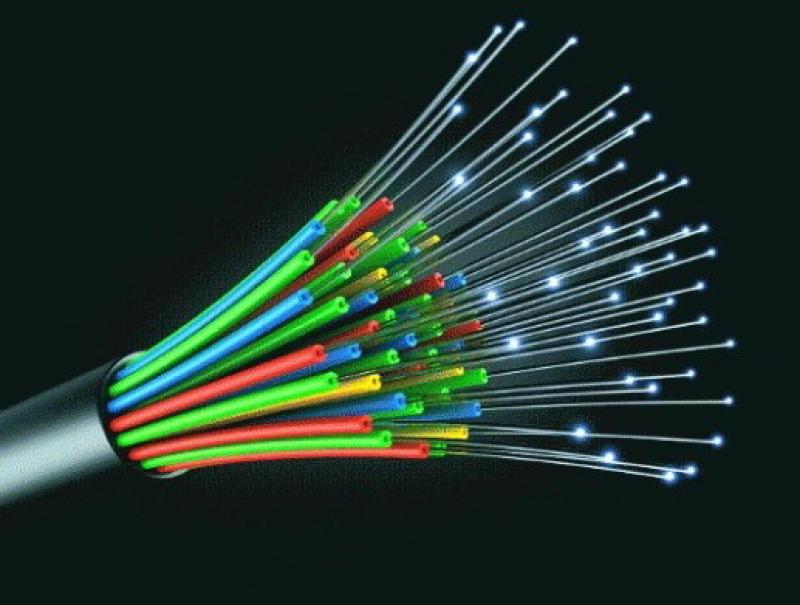Fiber optic circulators are crucial components in advanced optical communication systems, enabling efficient signal routing and improving overall network performance. These non-reciprocal devices allow light signals to travel in a unidirectional loop across three or more ports, ensuring seamless signal flow without interference. As networks scale up to meet increasing data transmission demands, fiber optic circulators help reduce loss, enhance signal integrity, and support complex functionalities such as wavelength-division multiplexing (WDM) and optical add-drop multiplexing (OADM).
Unlike standard optical couplers or splitters, fiber optic circulators maintain directional isolation, meaning light entering a specific port exits only through the designated output port, preventing back-reflection and crosstalk. This makes them indispensable in applications requiring precise control over signal paths, including bidirectional data transmission on a single fiber strand and high-sensitivity optical sensing systems.
Key Applications Driving Fiber Optic Circulators Market Demand Globally
The adoption of Fiber Optic Circulators has grown exponentially due to the expansion of telecommunication infrastructure, cloud computing, data centers, and high-speed internet services. One significant application is in dense wavelength-division multiplexing (DWDM) systems, where circulators facilitate the addition or dropping of wavelengths without interrupting the data traffic on the main fiber line. This capability supports network scalability and flexibility, critical for service providers aiming to deploy ultra-fast broadband connections.
Additionally, circulators are essential in fiber optic gyroscopes used in aerospace and defense industries for precise navigation and motion sensing. Their role in sensor networks extends to industrial automation, where accurate measurement and real-time monitoring are pivotal. Furthermore, the rise of 5G networks and increasing demand for low-latency, high-bandwidth communication make fiber optic circulators a vital hardware element in next-generation optical access networks.
Navigating Detailed Industry Reports for Fiber Optic Circulator Trends
For stakeholders seeking in-depth data on fiber optic circulators, comprehensive research reports provide valuable insights into market dynamics, technology developments, and competitive landscapes. These detailed analyses cover aspects such as product segmentation, regional growth patterns, and emerging opportunities tied to new applications and materials.
Accessing such reports is instrumental for manufacturers, suppliers, and investors aiming to identify key market drivers, forecast trends, and benchmark performance against industry standards. Market intelligence documents typically include evaluations of market share, pricing strategies, regulatory impacts, and technological advancements affecting product innovation. Navigational resources also highlight major players’ strategic initiatives, collaborations, and mergers, helping readers make informed decisions.
Commercial Considerations When Investing in Fiber Optic Circulators
From a commercial standpoint, the selection and procurement of fiber optic circulators demand careful consideration of technical specifications and cost-effectiveness. Parameters like insertion loss, isolation, polarization-dependent loss, and operating wavelength range significantly influence product performance and suitability for various network applications.
Moreover, vendors differentiate themselves through customization options, enabling clients to procure circulators tailored to specific operational environments—whether ruggedized types for harsh conditions or compact modules for data centers. The competitive pricing landscape, combined with evolving global supply chains, affects overall procurement strategies and time-to-market.
In large-scale deployment scenarios, scalability and compatibility with existing optical components are paramount. End-users evaluate circulator performance in terms of reliability, lifespan, and maintenance requirements, underpinning long-term return on investment. Additionally, integrating circulators into automated optical switches and reconfigurable optical add-drop multiplexers (ROADMs) furthers network agility and cost savings, accentuating their commercial significance.
Transactional Insights Related to Fiber Optic Circulator Purchasing Trends
Analyzing transactional data reveals growing demand patterns for fiber optic circulators, driven by expanding optical fiber installations worldwide. Buyers increasingly prioritize solutions that offer high durability alongside minimal signal attenuation to support continuous network uptime. Bulk orders often come from telecommunications operators upgrading infrastructure or building new fiber optic backbones in developing regions.
The shift towards sustainable and energy-efficient networks also influences purchasing preferences, with greener circuit components being favored. Consequently, manufacturers invest in advanced materials and innovative designs to meet these evolving criteria. Supply contracts often include post-sale technical support, warranty assurances, and training services, ensuring effective product deployment and minimizing operational risks.
Furthermore, strategic procurement involves aligning circulator purchases with broader network upgrade cycles and technology refresh initiatives. Transactional trends indicate a preference for standardized components that facilitate interoperability and ease of replacement, thereby reducing total cost of ownership for network operators.
Get this Report in Japanese Language: 光ファイバー・サーキュレーター市場
Get this Report in Korean Language: 광섬유 순환기 시장
About Author:
Money Singh is a seasoned content writer with over four years of experience in the market research sector. Her expertise spans various industries, including food and beverages, biotechnology, chemical and materials, defense and aerospace, consumer goods, etc. (https://www.linkedin.com/in/money-singh-590844163)
